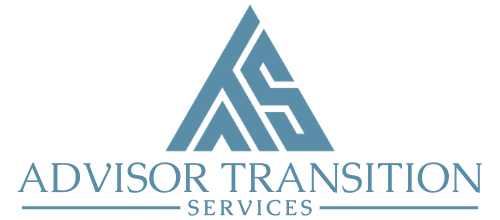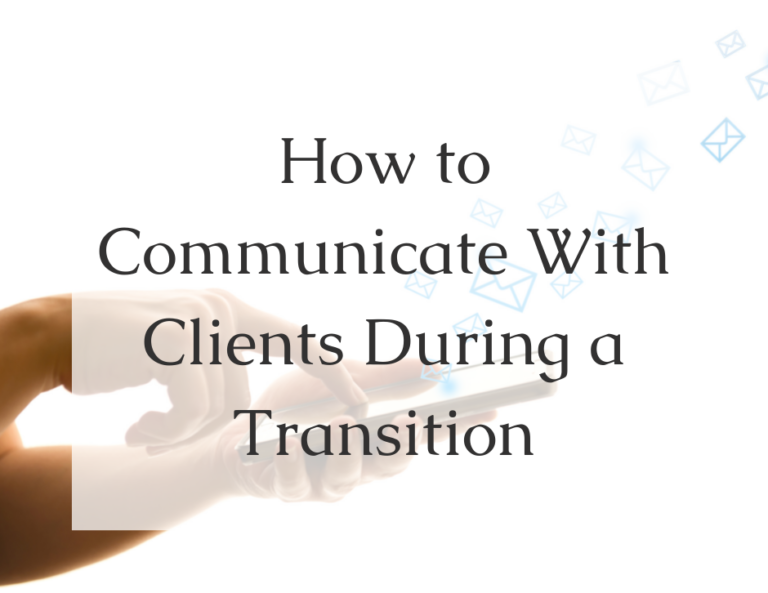We live in a COVID world right now. Things are in a constant state of flux and society is changing rapidly. Even the financial services industry, which is notoriously “behind the times” when it comes to technology and process, is making massive strides.
Transitions are no exception. Custodians are making onboarding improvements, e-signature platforms are being adopted as mainstream forms of information delivery and signature collection, and compliance rules are changing to meet digital demands.
That being said, some processes were archaic to begin with. While the changes are certainly welcome, they’re not going to solve all the problems.
So, how does one plan and execute a transition effectively in a COVID world, where things are hectic and inconsistent? I can offer a few suggestions.
5 Action Steps to Transition Effectively in a COVID World
- Understand EVERYTHING you need from your clients
- Get yourself file sharing technology
- Adopt secure email, or secure data collection, options
- Get clients up to speed with electronic signatures
- Create or find helpful resources that cut down on time
Understand Everything You Need from Your Clients
This advice applies to all transitions, not just ones being done in a COVID world. However, it’s so often overlooked or handled poorly, that it needs to be addressed.
Most advisors in transition are so focused on the new business logistics that they don’t take the time to properly understand the client paperwork requirements. They want to call clients and tell them there will be something to sign that will facilitate the transfer easily. In reality, there are quite a few things needed from the client in order to make the process efficient.
Oftentimes, external documents are required: trust documents, voided checks, statements, etc. Things you may no longer have access to or weren’t allowed to bring with you. There are also items that change over a client’s lifecycle: suitability information, beneficiaries, contributions, distributions, etc. A transition is the perfect time to confirm client data.
The more you understand about the process requirements, the easier it is for you to collect information in an efficient and complete way. It might seem like a daunting conversation, but it’s preferable to repeatedly going back to the same client to request additional items. Ultimately slowing down the transfer process, creating more work for yourself, and potentially damaging the client relationship.
Get Yourself File Sharing Technology
Attempting a transition on your own is tough. Having a team increases your likelihood of success. In a COVID world, it‘s not always easy, or safe, to have your team all in one place. Thankfully, much of the work can be done remotely.
It’s important to have the infrastructure in place to manage a remote team, and one of the most important pieces of technology to consider is file-sharing. One location for all client files and important documents that all team members can access. Some custodians, like Raymond James, provide it, or you can purchase it on your own.
Adopt Secure Email or Data Collection Options
During a transition, you’ll be requesting and sending client’s sensitive information. It’s important to have a secure way to manage that process.
You can use a software like ShareFile, that allows you to send links to clients that will allow them to securely upload documents to a folder, or you can use email encryption to protect the communications.
The technology you adopt is for protection of data and client peace of mind. By making security a priority, you’re showing clients that you have their best interests at heart.
Get Clients Up to Speed with Electronic Options
There will always be clients who resist change or “don’t use email” and that’s fine. However, in a COVID world, it’s just not plausible to have every client come into your office during a transition. It’s time-consuming and difficult to manage.
E-signature platforms have gained popularity. Getting your clients on board with the option can be extremely beneficial. Imagine the time it could save you.
Let’s say you send a client an e-signature packet and they sign it within the hour. Technically, you could have a transfer processing that same day. Now imagine sending the packet by mail. Even if you overnight it, with a return overnight back, you’re likely looking at a 3-day turnaround, at least. That’s assuming your client opens the envelope, signs the documents (correctly), and returns it to you within 24 hours of receiving it. Then you do your due diligence, scan it, and submit it for processing manually.
That’s not to say that e-signature is always easy. In some cases, it’s a pain. Each institution has their own version with their own preferred authentication methods, editing allowances, and grouping preferences. Sometimes, the process is time-consuming and overall tracking is crucial.
One of my best suggestions, especially in e-signature cases, is NOT to start a transition with your most important client. I know it sounds counter-intuitive, but something usually goes wrong on the first try. Start with your own accounts, or a close family member or friend. Someone who will easily forgive a few mistakes. Take your time and have every team member walk through the process from start to finish, so they can see exactly what the client will see. If everyone knows what the process entails, they can properly manage the clients’ expectations. Which will raise the overall retention and satisfaction rate.
Create or Find Helpful Resources to Cut Down on Time
The biggest hurdle in a transition is time. There’s never enough of it. Pain points become very pronounced when you’re repapering hundreds of accounts at the same time, using the same process over and over. COVID adds an element of stress and fear to the mix. Everyone has been through a lot in the past 2 years. Clients have had to adapt in ways they’d never imagined. Now, you’re asking them to change things about their finances: new firm, possibly new investments, probably new technology. Your focus might be on speed, but theirs is on safety and trust. They want to know that your choices are in their best interest, and efficiency will go a long way in convincing them of that.
So, how do you balance speed and efficiency? By using the right tools. We’ve discussed a few in this article, but there are many more resources you find or create.
Data collection, manipulation, and organization are a HUGE part of this process. The methods, allowances, and timing of which are determined by multiple factors. In some cases, you can bring client data with you and prepare a lot ahead of time. In other cases, you’re restricted from bringing anything and the process becomes focused on collecting data from clients and organizing it after the fact.
Either way, you need to have a plan. I use a lot of Excel spreadsheets and fillable PDFs, often customizing them to fit the situation. To access some free resources, visit my website. You can use them as a guide for creating your own resources or adopt them as your own.
Data collection is key. It’s amazing how helpful a fillable PDF can be. Ideally, you can type client information into a document while you’re speaking to them, save it in a shared file for your team to access, and use it to copy and paste the data directly into forms for clients to sign. It’s a great way to cut down on processing time, eliminate some room for error, and share the information with others.
Conclusion
COVID has changed a lot of things in this world. Some for the better – others not. One thing it has done is made people think differently about the things that really matter to them. There are no guarantees that your past relationship with your clients will make them remain loyal to you in a transition. Change makes people question the things going on around them, and a transition is a big change. Prepare yourself for the conversations you’re going to have with your clients and do everything you can to ease their fears, keep their trust, and retain their business.




